Telescope vs. Super-Telephoto Lens for Imaging?
The catalyst for this blog was a forum query about purchasing a super-telephoto lens versus a telescope for deep-sky astrophotography (AP). A quick google of “Telescope vs. Telephoto Lens” leads to 8,450,000 results that include variations of the question (Telescope vs Camera Lens, Telescopes Vs. Telephoto Lenses, Refractor telescope vs typical long telephoto, etc.). So, this question is more common than we thought! This blog is written for those new to the hobby to help you understand the differences between using a telescope for astrophotography versus various camera lenses. It does not go deeply into technique or hardware/software details, as you can find this information from many sources on the Internet. For this blog, super-telephoto will mean any camera lens with a focal length of 400mm or more.

Camera Lenses in General
Each of the major interchangeable-lens camera-body makers has its own proprietary camera mount for its lenses. Manufacturers aren’t interested in making adapters to attach lenses to equipment they don’t make. So, if you go the super-telephoto lens route for AP, you’ll want to review what third-party accessories are available to expand your system in the future. Due to the popularity of Canon lenses, there are third-party filter holders, filter wheel adapters, computer control adapters, and software control available for their lenses and camera bodies. There are also many accessories for Nikon lenses. For other brands, there are fewer options available. However, if you find you enjoy camera lens AP in its simplest form, you won’t have to worry about unavailable accessories.
Advantages of Camera Lenses
It’s a quick jump into astrophotography if you already possess any camera lens and compatible camera body. To avoid star trails or “jittery” stars, you need a star-tracking mount head and tripod that will be stable. The stability necessary will be dependent on the focal length of the lens and overall weight of your system. The shorter the lens focal length, the more forgiving of vibration and tracking error. For example, a 135mm telephoto, on a full-frame camera, yields about an 18° field-of-view along the diagonal. This is great for imaging sections of the Milky Way and nebular regions like the North American and Pelican combo. A 400mm super-telephoto yields about a 6° field-of-view along the diagonal and will frame both the Great Nebula and Running Man in the “sword” of Orion and thus would require a sturdier mount.
You can spend all your AP hobby time exploring the universe with camera lenses instead of telescopes if you wish. For example, ultra-wide-angle to normal lenses (about 14mm to 50mm) are the gateway to taking striking, starry night-landscapes and documenting meteor showers. Photographer Akira Fujii made his mark photographing constellations with camera lenses. His images are regularly featured in Sky & Telescope magazine. In the normal to medium-telephoto (about 35mm to 200mm) range, there aren’t any/many quality scopes on the market to tempt you away from buying a camera lens.


Super-Telephoto Features Not Used in AP
When camera lenses reach the super-telephoto range, they compete directly with telescopes. If the new imager was considering the purchase of a super-telephoto strictly for AP, the cost would include “extras” not used in this type of imaging. For AP, you only need to focus at infinity, which means the super-quick, vibration-free focusing found on interchangeable lens cameras will not be used. Except perhaps for focusing on the Moon, the autofocus on a daylight camera with this lens will be flummoxed by the starry, point sources of light found in the night sky. Image stabilization is unnecessary and is best turned off to prevent it from engaging by accident. Also, any front-mounted UV filter can lead to ghost images in fast lenses. It is best to take those front filters off if they are not designed for AP.
Notes on Super-Telephoto and Camera Body Accessories
Camera Body
As we mentioned at the top, lens mounts are not interchangeable between brands, so constraints are placed on what camera bodies super-telephotos can be paired with. While all decent, daylight photography camera bodies can record the night sky, given enough exposure, Canon and Nikon have adapted some of their daylight cameras for imaging the hydrogen-alpha wavelength of light found in a lot of nebula photography. Additionally, depending on the lens model, there are third-party adapters that connect camera lenses to dedicated astro-cameras. Dedicated astro-cameras are sensitive to more wavelengths of light and offer higher resolution than daylight color cameras.
Filters
For imagers with imperfect skies, light pollution filters that thread onto the front objective of a camera lens or clip into the interchangeable-lens camera body are available. These will remove the airglow of light pollution from the image for a darker sky background. ZWO makes filter drawers that connect between their line of astro-cameras and Canon or Nikon lenses. It’s a very simple way of connecting camera lenses to an astro-camera and gaining the ability to use AP filters.
Amplifiers
If more magnification is needed, some lens brands have teleconverters / extenders that increase the focal length of their lens — usually limited to 1.4x and 2x the focal length. The best of these are dedicated converters that are optically matched for a specific model lens.
Backfocus for Accessories
In order to handle the wide range of accessories available to AP imagers as their imaging needs grow, an imaging system needs a good amount of backfocus. This is where filter wheels, off-axis guiders, thread size converters, and spacers go. In general, daylight camera systems are just not designed with AP backfocus needs in mind.
Color vs. Monochrome Camera, Imaging Filters, and Image Processing Considerations

Intermediate imagers will want to explore filters used in AP. Unless you can connect your super-telephoto lens to a dedicated monochrome astro-camera, you will be limited to the basic filter types and processing techniques practiced in AP.
Commonly used visible light filters are Light Pollution (LP); Red, Green, & Blue set (RGB); the narrowband (specific to an ionized atom in a nebula) Hydrogen-alpha (Hα); and various narrowband groups such as the Sulfur II, Hydrogen-alpha, and Oxygen III (SHO) “Hubble Palette” set. Of these, only the LP filter works well with color cameras. All the others are meant to work with monochrome astro-cameras.
This is because the light receptors on the monochrome camera sensor can detect light passing through all these filters. On the other hand, a dedicated color camera has separate light receptors for red, green, and blue light that will reject the light of other colors. So a color or narrowband filter will greatly reduce the amount of light recorded on a color camera’s image sensor. See the Bayer Pattern Filtration illustration in this section.
This gives monochrome cameras an advantage in shorter exposure time and greater resolution potential. The resolution advantage comes about because a single color pixel is typically formed by combining light gathered from a red, two green, and a blue photosensor on the chip. In a monochrome camera, each pixel records just as they are without the need for combination, though there can be other benefits to “binning” pixels together.
When combining monochrome images made through color filters, each filtered image set is assigned a color channel. The channels are adjusted individually and color balanced on combination to form the final image. The results can be spectacular. The top image here of the Rosette Nebula was taken with a color astro-camera. Below that is a rendition of the same object taken through narrowband “Hubble Palette / SHO” filters using a monochrome astro-camera. Because this filter set isolates various layers in the nebula, the final image can be manipulated to convey a sense of dimensionality to the image not found in the color camera image.


Control Software and Hardware
As new AP imagers become intermediate AP imagers they realize the need for control software to automate focusing, image acquisition, filter changes, and image tracking tasks when using longer focal length lenses. With telescopes, this is accomplished by having a computer-controlled focus motor, a guiding camera with off-axis guider or guide scope, a computer-controlled filter wheel, and software to carry out the automated asks. The control software understands the point-source characteristics of a star and can make adjustments to focus using the focus motor while simultaneously using the guiding camera to shift the position of the telescope mount.
The equivalent automation with super-telephoto lenses is only partially possible — depending on the lens brand and what kind of camera you are using. Guiding is possible with a guide scope and a quality mount. The popular ZWO brand makes adapters for use with Canon and Nikon lenses to work with their automated filter wheels, and Astromechanics makes a Canon Lens Controller for Canon lenses. There is not much available for other brands of lenses.
Consumer Quality vs. Pro Quality Super-Telephotos
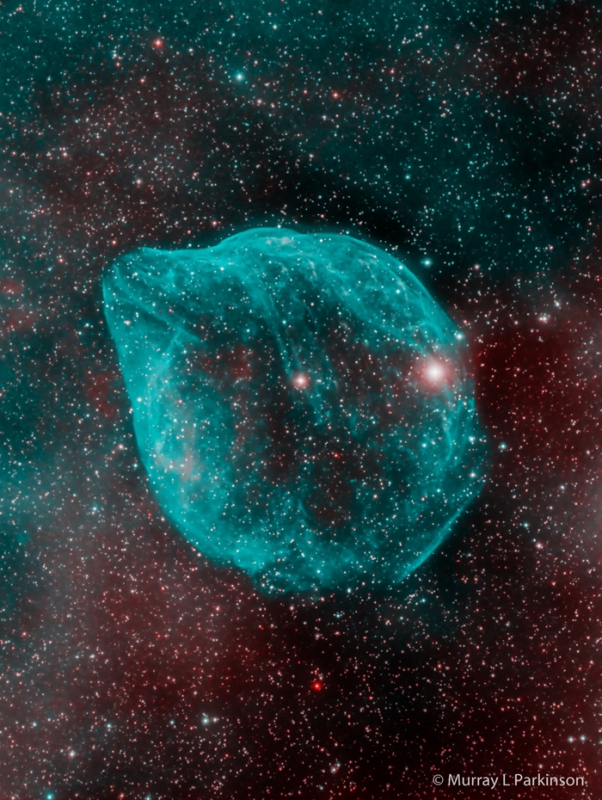
Consumer quality super-telephoto lenses can be had at reasonable prices and with a wide range of specifications, but according to The Deep-Sky Imaging Primer (3rd Edition) by Charles Bracken, “Daylight photography is far more forgiving of optical defects, and most lenses are designed with this in mind. Chromatic aberrations, field distortion, and astigmatism that would never be apparent under normal photographic circumstances are all too easily revealed by the flat fields and pinpoint stars of the night sky.” So in order to get the sharpest image with less color fringing, the usual advice is to close a consumer lens down a few f-stops. This has the adverse effect of increasing the exposure time or the number of exposures considerably.
Quality telescopes can be used for imaging without stopping down. They are simply designed for the difficulty of imaging a bright point source against a black sky background. For example, the image here of the Porpoise Nebula was taken with our Tele Vue-NP127is scope at full aperture, f/5.2 through narrowband filters.
Higher-quality super-telephotos are available. Canon’s line of professional “L” series lenses feature fast focal ratios and low-dispersion glass like an APO telescope. Likewise, Nikon has an equivalent in the Nikkor “ED” series of extra-low dispersion glass lenses. These lenses can shoot with the aperture wide open and deliver great image quality. However, it all comes at a price. The Canon 800mm f/5.6L and NIKKOR 800mm f/5.6E FL ED — having focal lengths and focal ratios similar to quality refractors — can both set you back $13,000. For that amount of money, you could buy a high-quality scope, mount, and astro-camera — shop around and see for yourself!
More on Tele Vue Telescope Secrets
Over the years, we’ve seen conversational topics in online amateur circles that repeatedly crop up concerning the definition of apochromatic refractor, triplet vs. doublet design, and how glass designation might define performance. We expect these questions to continue to appear as new amateurs discover the hobby. So bookmark the following blog post link for reference because here you’ll find notes on Tele Vue’s philosophy and build practices concerning our telescope line of 100% APO refractors: Tele Vue APO Design and Build “Secrets”.
The Final Word on Telescope vs. Super-Telephoto Lens
For those interested in imaging nightscapes, constellations, or large swaths of sky, camera lenses are the way to go. Telephotos are a great way to start in deep-sky imaging if you already have the gear or acquire it for day and night imaging. Telescopes are essential if you need specialized gear between the camera and lens, opt for extreme focal lengths, or desire APO performance without paying premium camera lens prices.
Did you observe, sketch, or image with Tele Vue gear? We’ll like your social media post on that if you tag it #televue and the gear used. Example:
#televue #np127is #porpoisenebula
Do you want your Tele Vue images re-posted on Tele Vue Optics’ Social Media accounts? Use this hashtag for consideration:



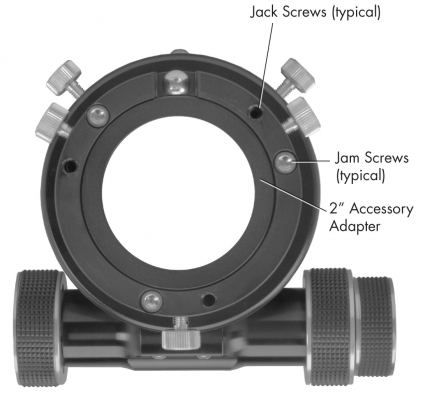
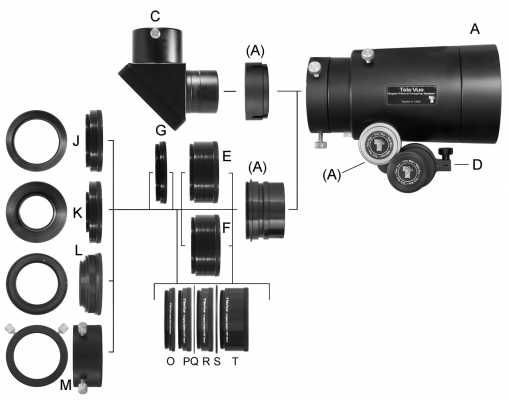
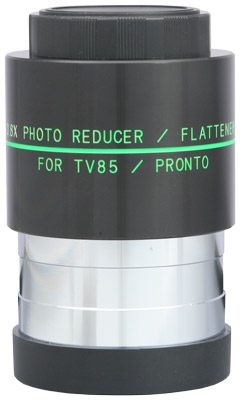
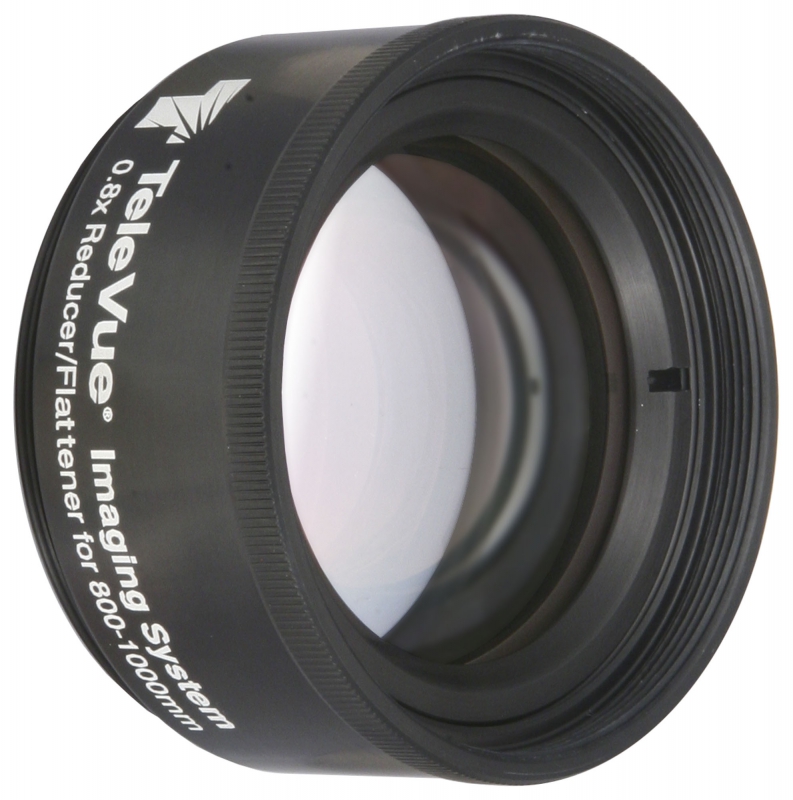

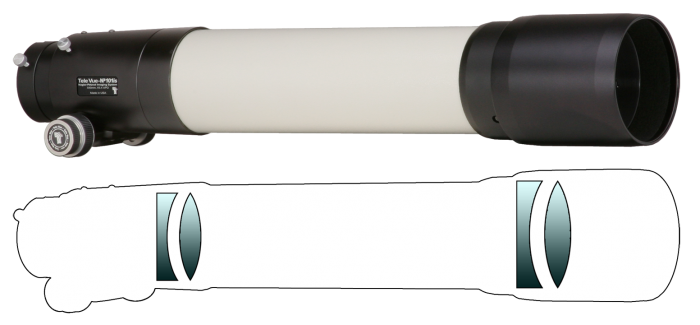

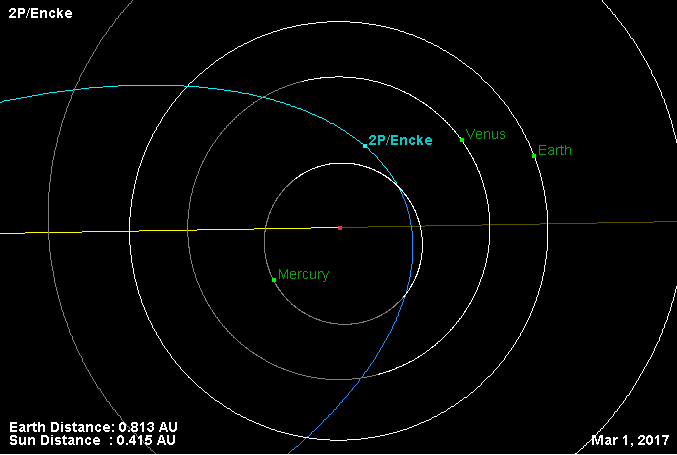
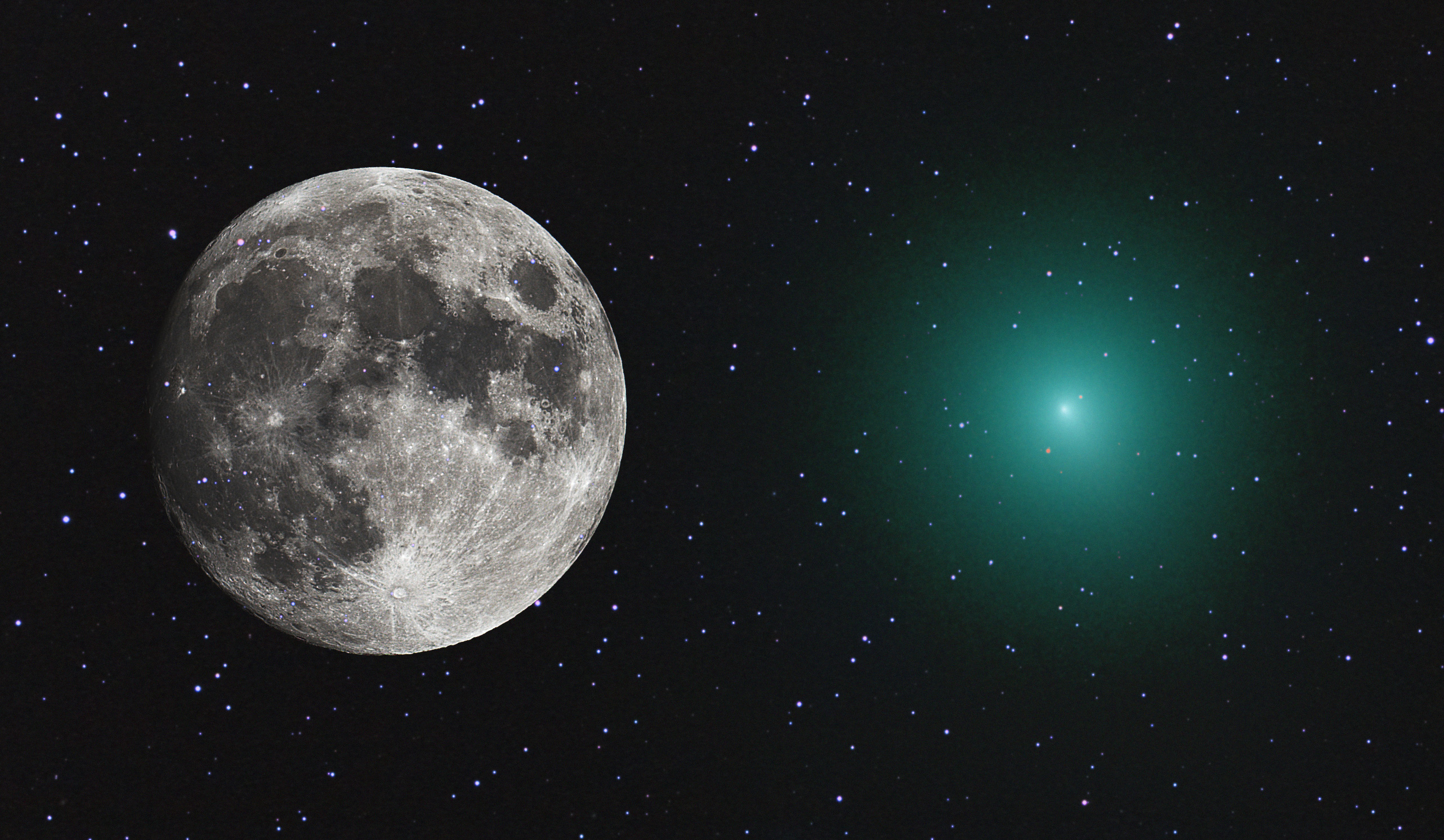
I use the TeleVue NP127is scope with QHYCCD QHY600M camera and this configuration works perfectly. I have a huge field a bit over 3×2 degrees and also fantastic resolution 1.17 arcsec/pixel. This configuration allow to take image of big nebula’s such as Rosette Nebula on one shot with a lot of details.
Great introduction for those starting out and considering their first telescope. Thank you. I have ordered an NP101is and looking forward to trying it out after having used several canon lenses and learning the basics